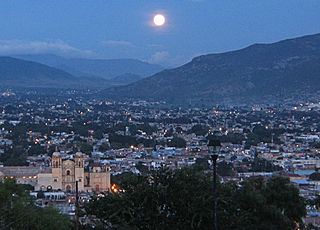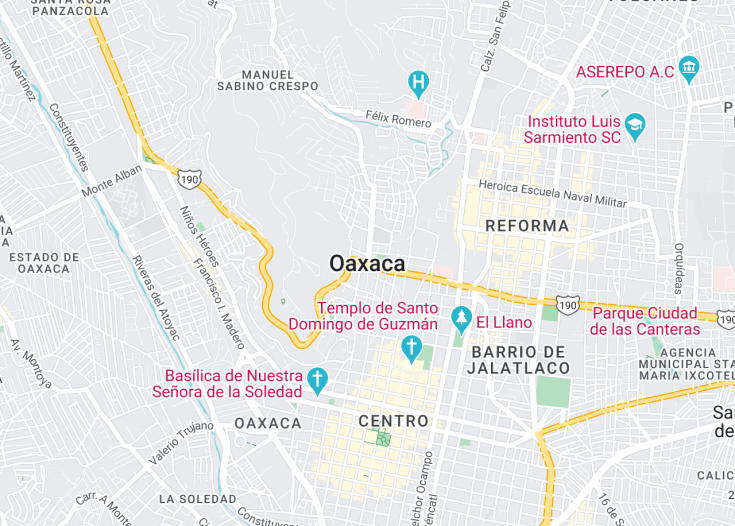Oaxaca, Mexico, is a vibrant region known for its rich history and cultural tapestry, boasting a stunning blend of indigenous traditions and colonial charm. Visitors can explore ancient ruins, colorful markets, and artisan workshops. The area is famous for its culinary diversity, featuring dishes like mole and tlayudas. The landscapes range from rugged mountains to lush valleys, providing a perfect setting for outdoor activities. Oaxaca’s festivals, especially the Day of the Dead and Guelaguetza, offer immersive experiences into the local customs and community spirit.
Prioritize visiting the markets of Oaxaca, where you can sample local specialties and purchase unique handicrafts that reflect the region’s rich artisan traditions.
Consider scheduling your trip during one of Oaxaca’s vibrant festivals like the Day of the Dead or Guelaguetza to experience the region’s full cultural vibrancy.
Top things to do & see in Oaxaca
Select the following sights and activities to discover best tickets and tours available in Oaxaca.
Oaxaca: A Cultural Mosaic in the Heart of Mexico
| Country | Mexico |
| Time in Oaxaca | GMT-6 |
| Language spoken | Spanish |
| Population | 300,050 (World Population Review, 2023) |
| Currency | Mexican Peso (MXN $) |
| Airports |
|
Oaxaca, the capital city of the state of Oaxaca in Mexico, is renowned for its rich history and vibrant cultural heritage. Nestled in the Sierra Madre mountain ranges, it serves as a focal point of indigenous Mexican culture, primarily the Zapotec and Mixtec communities. Oaxaca’s historical significance is palpable, with its well-preserved Colonial architecture and numerous archaeological sites including Monte Albán and Mitla, which are key attractions for both tourists and scholars of pre-Colombian American civilizations.
The city is an epicenter of culinary diversity, widely recognized for its unique and flavorful cuisine, which includes staples like mole, chapulines, and tlayudas. Oaxaca is also famous for its artisanal crafts, particularly textiles and pottery, which include brightly colored hand-woven blankets and intricately painted black pottery. These traditions, passed down through generations, highlight the artisanal skills that have been preserved over centuries.
Every year, Oaxaca becomes a vibrant stage for the Guelaguetza festival, an event that celebrates the folklore and traditions of the state’s eight regions. Performers dress in regional attire and share their dances, music, and crafts, drawing visitors from around the globe. Additionally, Oaxaca’s Day of the Dead celebration is a profound spectacle, blending indigenous rituals with Catholic practices, to honor and remember the departed. This unique synthesis of pre-Hispanic and Hispanic elements is a hallmark of Oaxaca’s cultural richness.
Where is Oaxaca?
Oaxaca is located in Southwestern Mexico, nestled among the Sierra Madre del Sur mountains. It is a region rich in history and indigenous cultures.
Distances:
| Route | Distance by car | Time by car |
|---|---|---|
| Mexico City to Oaxaca | 287 miles (462 km) | Approximately 5 hours 30 minutes |
| Puebla to Oaxaca | 219 miles (352 km) | Approximately 4 hours 15 minutes |
What is Oaxaca famous for?
Oaxaca is globally celebrated for its rich cultural traditions, vibrant festivals like the Guelaguetza, its unique gastronomy including Oaxacan mole, as well as its significant archaeological sites and artisan crafts.
History
Prehistoric Period – Before 500 BC
Human activity in the Oaxaca region dates back to around 11,000 BC, with nomadic tribes of hunter-gatherers, who gradually transitioned into more settled agrarian societies. By 1500 BC, the early Zapotec civilizations began to take shape, marking the start of significant agricultural and social development.
Monte Albán Period – 500 BC to AD 750
The foundation of Monte Albán around 500 BC propelled Oaxaca into a dominant cultural and political force in Mesoamerica. This city, constructed by the Zapotec people, became one of the earliest and most influential urban centers, renowned for its unique terraces, pyramids, and astronomical observatories.
Post-Classic and Spanish Conquest – 750 AD to 1521 AD
Following the decline of Monte Albán, the region saw the rise of smaller city-states. In 1521, Spanish forces led by Hernán Cortés invaded, leading to the incorporation of Oaxaca into the Spanish Empire. This period was marked by significant cultural exchange and conflict.
Colonial Period – 1521 AD to 1821 AD
During the colonial period, Oaxaca became a significant center for mining and agriculture. The Spanish established a rigid social structure, which significantly influenced the cultural landscape, integrating Spanish architectural and religious practices with indigenous traditions.
Independent Mexico – 1821 to the Present
After Mexico’s independence in 1821, Oaxaca emerged as a fervent supporter of sovereign governance. The state played a pivotal role during the Reform War and the French Intervention. In the 20th century, Oaxaca became known for its cultural contributions, notably through figures like painter Rufino Tamayo and indigenous rights advocate Benito Juárez, Mexico’s first indigenous president.
Visit Oaxaca
What to See and Do in Oaxaca
Known for its rich cultural history and stunning natural landscapes, Oaxaca offers a plethora of attractions and activities. Visitors should not miss exploring the ancient ruins of Monte Albán, strolling through the vibrant streets of Oaxaca City, or indulging in the local cuisine, renowned for its complexity and flavor, particularly dishes like mole and tlayudas. The state is also famous for its crafts, including textiles and pottery, which can be explored in local markets.
- Visit the historic center of Oaxaca City, a UNESCO World Heritage Site.
- Explore the archaeological site of Mitla with its intricate mosaic fretwork.
- Experience the natural beauty of Hierve el Agua, natural rock formations that resemble cascades of water.
Annual Events in Oaxaca
Oaxaca is vibrant with festivals throughout the year, celebrating everything from traditional indigenous cultures to contemporary arts. The most famous event is the Guelaguetza, which takes place in July and showcases traditional dance, music, and clothing from various ethnic groups across the state. The Day of the Dead in November is another significant event, where locals honor deceased loved ones in a celebration that includes beautifully decorated altars and processions.
Best Time to Visit Oaxaca
The optimal time to explore Oaxaca is during the dry season, from October to May, when the weather is mild and pleasant. This period avoids the heavy rains of summer and coincides with several major cultural festivities, providing a richer experience of the local traditions and lifestyle.
Is Oaxaca Worth Visiting?
Oaxaca is unquestionably worth visiting for its unique blend of indigenous cultures and Spanish colonial history, vibrant art scene, and exquisite culinary offerings. The region’s landscapes offer everything from mountainous terrains to serene beaches, making it a comprehensive destination whether one is seeking cultural immersion or natural escapes. The warmth of the Oaxacan people and the richness of their traditions make every visit not only memorable but also deeply enriching.









